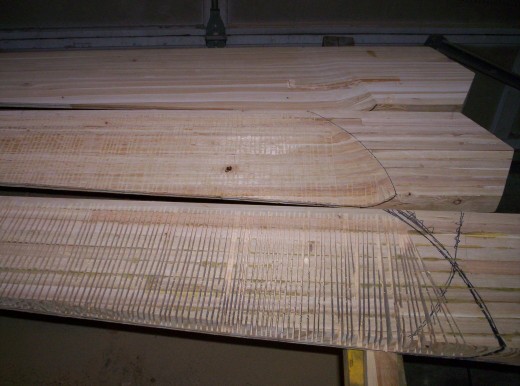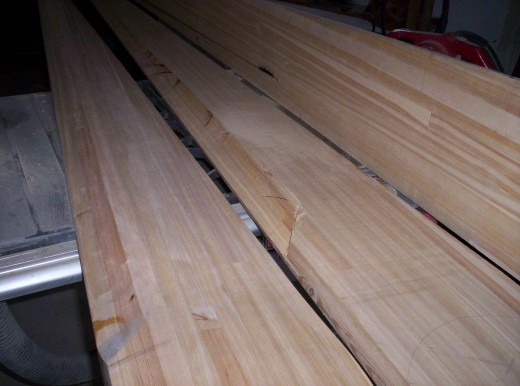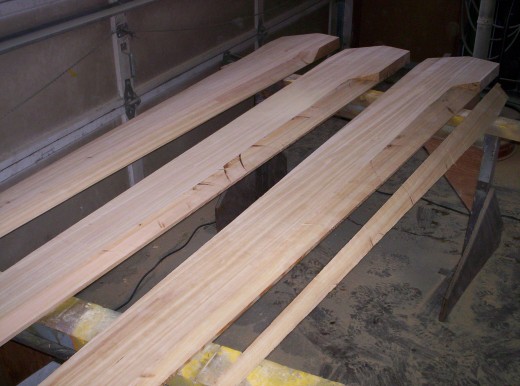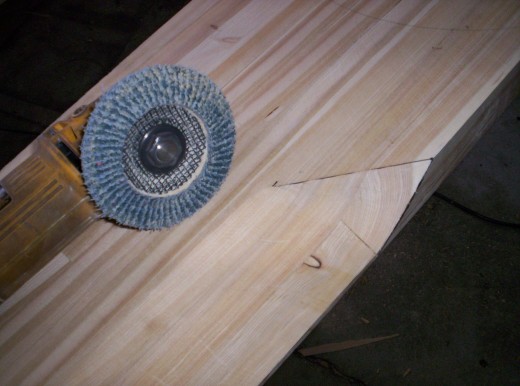
The wood for these blades is tammerack, that grows in high moisture low areas along with our local Mn. cedar. It has a natural rot resistance like cedar, it is however alot heaver than cedar, and is more ridged.The mostly clear strips are 1-1/2"wide by 2" deep.The wedge shape piece was cut off the back side of each blade using a lumber cutting band saw. for sawing, the blades were fastened to a taper jig that sat on the bed of the saw to get the desired taper. 7/8" was left on the tip, and was sawed to nothing at the root.

the degree of slop on the front, was done with a skillsaw, with two strips of wood that was clamped to both leading and trailing edges. the leading edge strip was 1-1/2" deep the full length of the blade. The trailing edge strip was cut to a taper from one end to the other to get the desired pitch. The saw is on a flat guide, that sits on top of the strips, and is used to make continuous cuts, which also cuts thru the strips on both sides as you go. As you can see, I have the guard on the saw tied back, which is not safe, and is not reccomended. Fanman, has posted kind of the same thing, using a router, which would be alot safer, and result in the same thing. I would have done that also, but did not have a long bit.

The blades after saw cutting, back one has been sanded, middle has had scrape between cuts knocked off with hammer, and front shows all the cuts.

Shows how alot of matl. was cut off back side of leading edge using a 10" table saw.

shows all three blades with one scrap piece of the back side of leading edge.

This is the tool that I use for doing the radius at the root. It cuts very fast,and is a flap sander sold at most hardware stores and will fit on 4 " angle grinders. I am very happy with the way they turned out, and will post the finished product with the construction of my new 16" duel rotor.
Great fun Harrie